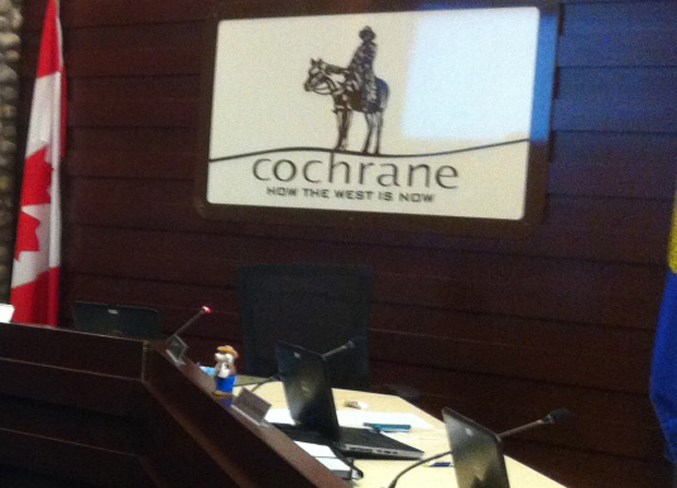Cochranites will soon be asked to weigh in on how they want to see their municipal government handle growth pressures in the coming years.
Town of Cochrane administration is in the process of preparing the Cochrane Growth Study (CGS), and they provided an update to council on Feb. 21 to share their findings-to-date.
While the actual facts and figures aren’t available for public consumption just yet – they haven’t been made available to council yet, either – when they are, residents will be asked to engage and provide feedback. According to the presentation, this will happen sometime later this year.
Mayor Jeff Genung did provide a feel for some of the growth issues that need to be discussed, and the trends of what they’re seeing so far.
“We got a snapshot of what we’re seeing now, what the past was, and setting the tone for how to react to our growth,” he said in an interview with The Eagle.
“It’s basically saying Cochrane’s growing, which is obviously not a shock to anyone who’s even spent 10 minutes in our community, but it’s setting the stage for what we need to do with the data.”
The exercise will involve averaging out growth trends over the last 20 years, extrapolating that into the future, and what that future growth will mean for issues like water supply, and availability of residential and non-residential land uses.
Part of the discussion will centre around options that assume differing population growth projections. If a conservative growth projection is assumed, that affects strategic activities. If planners assume a growth rate that’s higher, that would affect the related planning processes. Three projections will be presented.
Genung said that by basing strategic activities on data (as opposed to guessing what the population will be 10 or 20 years from now) Town planning should be more effective.
The CGS began in 2022 to forecast what Cochrane’s population could look like over the next 25 years. The findings showed that Cochrane has experienced rapid growth in recent years, surpassing previous predictions made in 2010 and 2013.
The study provides a range – using multiple population projection scenarios – of what this expected growth could entail, ensuring that the projections appropriately reflect historical growth trends.
It also predicts trends in the demand for the places and industries where people live and work.
“The study will serve as a valuable tool for Cochrane to proactively navigate future growth,” said the Town’s executive director of development and infrastructure services Drew Hyndman, in a press release. “It highlights the need for thoughtful planning and development now to ensure that growth benefits the community as a whole in the future.”
Data collection includes 10-year historical growth data in Cochrane and the Calgary Metropolitan Region to predict population and employment growth and associated land requirements over the next 25 years. It also addresses Cochrane’s current land supply; land within the municipal boundary, and the demand for land to support population and industry.
Continued growth in Cochrane’s employment and residential opportunities results in an increased demand for land to support this growth. The CGS shows that within Cochrane’s current boundaries, the land available is estimated to reach capacity between 2037 and 2041.
“Growing on purpose is important to council and administration. As part of our strategic plan, Cochrane is determined to preserve our unique identity and ensure Cochrane is a complete community for residents, visitors and businesses to live, work and thrive,” said Mike Derricott, the Town’s chief administration officer, in the release.
The study update to council marks the completion of its data-collection stage. The data analysis and reporting stage is anticipated to be completed this summer.
In terms of process, the study is a preliminary step to renewing Cochrane’s Municipal Development Plan and other future master plans that shape Cochrane’s neighbourhoods, business and economic opportunities, and quality of life.



